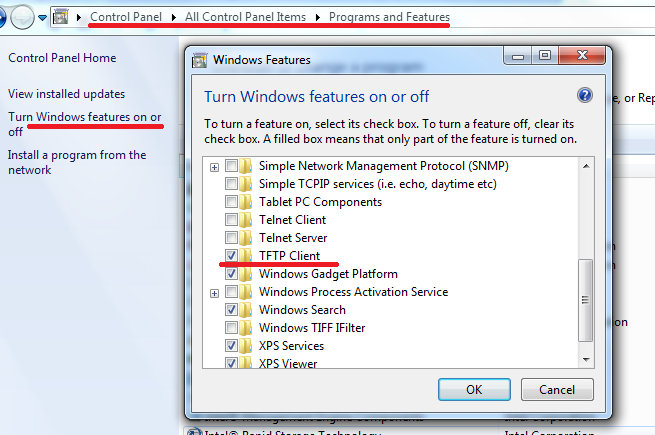

#TFTP CLIENT TEST PASSWORD#
Root Password Message After Installing the Linux Kernelĭuring a PXE boot installation, the following message appears after loading the Linux kernel:
#TFTP CLIENT TEST DRIVER#
An exact match is necessary to ensure that module versioning does not cause the 5704 network driver ( suntg3) to fail to load. This occurs if the linux distribution installed on the PXE server does not exactly match the linux distribution against which the supplemental CD (supplied with the Linux blade) was built. If the NFS services are working normally and can be used from other machines on the network, it is likely that the PXE server has provided the wrong kernel to the blade. See the Sun Fire B1600 Chassis Administration Guide for information on installing the SSC. If you have only one switch and system controller (SSC) installed on the chassis, ensure that the SSC is installed in position 0. This problem may also occur if the blade is not correctly connected to the PXE server.

If this path is not in the output, check your NFS setup and configuration. Usually, there will be no need to change the server's port.# showmount -e Export list for PXE-server : /tftp (everyone) The TFTPClient has two different ctors, one with the server name and another with the server name and port. Please keep in mind that this is just a simple example implementation which will work well for the author, but it is not yet complete (see the To Do list). For convenience, I decided to define enumerations for the Opcodes, modes, and a special exception class for the TFTP failures. The TFTP client is small enough to fit into one class.

Many TFTP servers will stuff the error message with "\0" to equalize the length of all packet types. In some cases, the server might send an error packet which consists of the Opcode, the error code, and a message terminated by one or more zeros. They only consist of the Opcode and the block number to acknowledge. The acknowledgemet packets have a length of 4 bytes. Because each data packet should be 512 (data) bytes long, the last packet will have between 0 and 511 data bytes. Acknowledgement packets will be answered with the next data packet. If a packet is not acknowledged in time (some seconds), the sender will repeat the data packet automatically until it is acknowledged. TFTP will use a block number for each data packet, which has to be acknowledged. Therefore, the combination of the server and the client TIDs will be used as a "virtual channel". UDP does not provide a streaming functionality by itself. If something goes wrong, the server will send an error packet. Request Packetĭepending on the type of request, a data packet for RRQ or an acknowledgement packet for WRQ will follow. The TIDs are constant while the transfer is active.Įach request packet will contain the Opcode, the filename terminated by a zero, and the transfer mode terminated by a zero. The next packet from the client will be sent to the server using the server's TID as the destination port and vice versa. The source port of the client packet is the client side TID, and the source port of the server side is the server's TID (transfer ID). The server will either answer with the first data packet (RRQ) or an acknowledgement packet (WRQ). Each session will start with a request (read / write) packet from the client which will be sent directly to the servers port (e.g., 69).


 0 kommentar(er)
0 kommentar(er)
